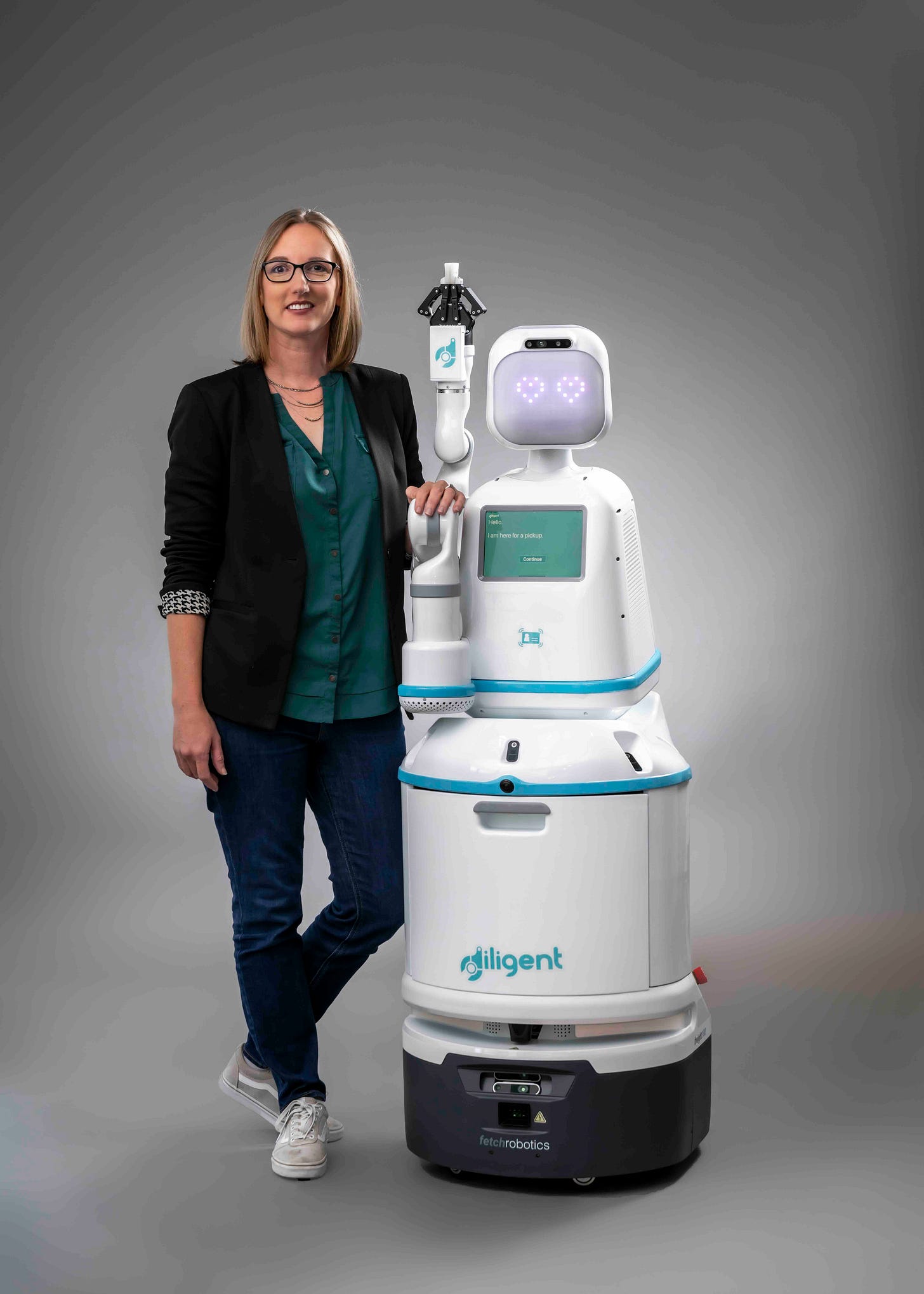Moxi is a human-sized wheeled robot that’s built to do hospital chores. It’s made by Diligent Robotics to free nurses and other staff to spend more time with patients and their problems (and less time walking down hallways and searching supply closets). More than 100 Moxis are working in hospitals around the U.S.
To succeed, Moxi needs to be useful, welcome and easy to work with — a combination of practical and social skills. Practical: Moxi is human-sized because hospital rooms and hallways were built for humans, with a body that has receptacles to accommodate the kind of stuff that needs toting from room to room, like medications and bedding. Social: Moxi has “eyes” so people can tell what it’s about to do, and a voice that can politely ask people to press an elevator button.
Getting the social part right is a delicate balance. If Moxi isn’t approachable and understanable, staffers won’t be at ease using it. If Moxi is too expressive and conversational, it might distract people from their jobs (or make them worry about how long their jobs will exist).
Andrea Thomaz has been thinking about how robots fit with people for decades, first as a researcher and then as a startup CEO (Diligent, which since 2017, when she and her former student Vivian Chu founded Diligent). We spoke about the difference between robots in academic research and robots in business; about the impact of ChatGPT and other generative AI on robotics; about what the roboticists learned by watching and talking to nurses; about decisions to keep Moxi from appearing more human-like than it needs to be; and a lot of other interesting topics. Give us a listen!
As always, please note the transcript is auto-generated and not word-perfect.














Share this post